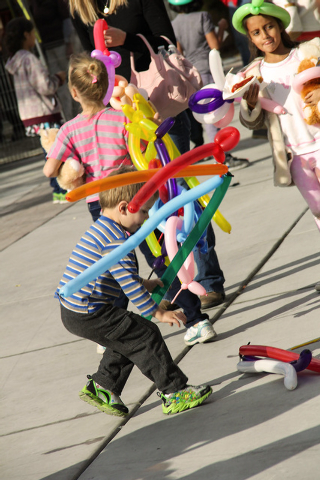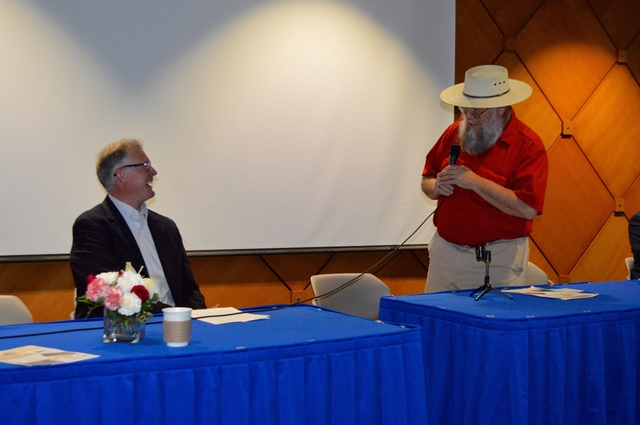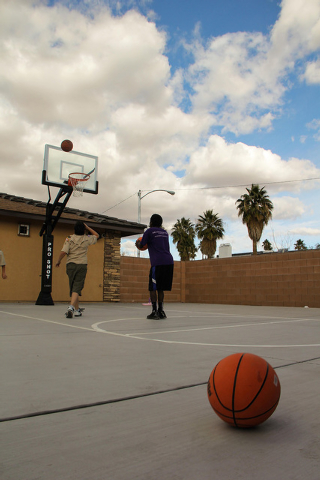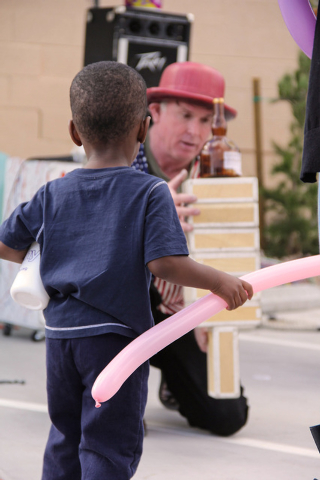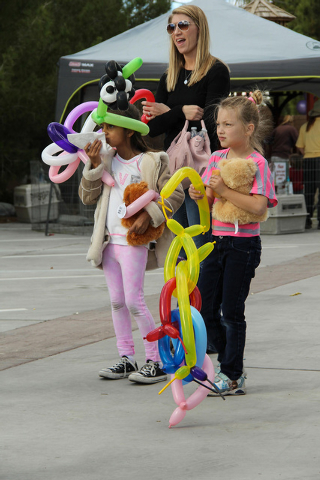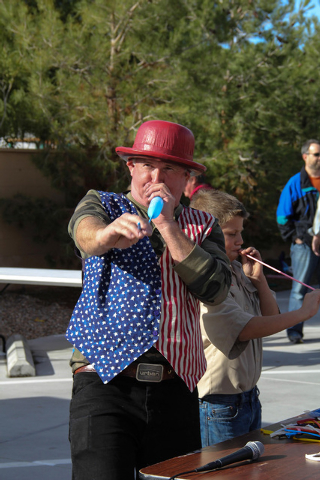Vegas celebrates drop-in center for homeless youth expansion
After suffering years of daily physical abuse from her drug-dealing father and prostitute mother, 18-year-old Dessirae escaped from her childhood home.
In the shadows of Las Vegas’ brightest lights lies a refuge for the less talked about droves of homeless teens.
The Clark County School District reported more than 8,000 homeless students this past year — a 21 percent increase from the previous school year, according to Nevada Partnership.
Those displaced youths now have a much bigger and much nicer place to call home.
“No matter where I’d go, he’d find me,” Dessirae said of her fear of running away. But “they were there when no one else was,” she said of the Nevada Partnership for Homeless Youth Center.
The drop-in center for homeless youth at 4981 Shirley St. celebrated its expansion Saturday with several hundred attendees, including clients, partner agencies and community members.
The youth center, which serves as a place for homeless youth to spend their days or come after school, doubled in size to 4,600 square feet, adding a half-basketball court, computer lab, office space and art and music rooms.
Although the facility does not have sleeping quarters, the agency operates 24 hours a day and works with local shelters that accommodate youths who need a place to stay overnight.
Dessirae, who did not wish to disclose her last name, recalled one of the last times her father hit her. She says he threw her against the wall, punched her over and over again, then kicked her in the stomach.
Then, he kicked her out.
Many people don’t realize how severe youth homelessness is in the community, said Arash Ghafoori, executive director of Nevada Partnership for Homeless Youth, during the August 2014 expansion groundbreaking ceremony. “Getting them off the streets today before they become tomorrow’s homeless adults” is the organization’s goal.
Because of the drop-in center, Dessirae said she graduated from high school with honors and now is preparing to attend the College of Southern Nevada.
“I feel safe,” Dessirae said.
She no longer is a victim of domestic abuse. She is college-bound with a dream to help children who can identify with her situation.
“This is the hub of all our operations,” Ghafoori said Saturday as he showed off the latest additions to the center, which offers programs for reunification, independent living, vocational training, therapy and community outreach.
Ghafoori said most teens who have dealt with sexual or physical abuse, homelessness or loss of family only know how to make short-term decisions for survival. “These are resilient young people,” he said.
He hopes this center will prepare youths for the long term. “There’s a place to get help,” he said.
The block party celebration, centered between the Strip and the University of Nevada, Las Vegas, included a petting zoo, games, a food truck and tours of the newly remodeled facility.
Before the expansion, the center was “bursting at the seams,” Ghafoori said.
A partnership between Nevada Women’s Philanthropy, HomeAid Southern Nevada and Nevada Partnership for Homeless Youth made the expansion possible with $620,000 in grants and in-kind donations.
Contact Kimberly De La Cruz at kdelacruz@reviewjournal.com or 702-383-0381. Find her on Twitter: @KimberlyinLV.






